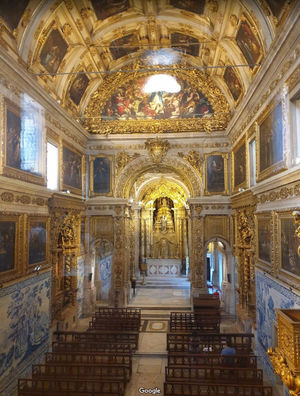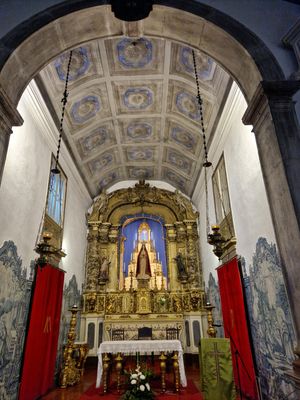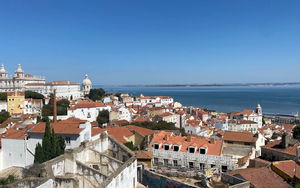National Tile Museum (Lisbon)
Photo: Franco Corti
Table of Contents
National Tile Museum
The National Tile Museum, located at Rua da Madre de Deus 4, 1900-312 Lisbon, Portugal, is one of the country's most important cultural institutions, dedicated to the preservation, study, and exhibition of tiles. This unique museum is situated in the former Convent of Madre de Deus, founded in 1509 by Queen D. Leonor, a notable example of Manueline and Baroque architecture.
History and Location
The National Tile Museum was founded in 1965 and is housed in the former Convent of Madre de Deus, a historic building dating back to the 16th century. This convent features Manueline and Baroque architecture, enriched by the adjacent Madre de Deus Church, with an interior richly decorated with gilded woodwork and historical tiles.
Collection
The museum's collection spans five centuries of tile production, from the earliest examples of the 15th century to contemporary creations. The diversity of the collection includes tiles from various regions of Portugal and other countries, reflecting cultural exchange over the centuries. Among the notable pieces is the enormous tile panel depicting Lisbon before the 1755 earthquake, one of the museum's most iconic pieces.
Exhibitions and Activities
In addition to the permanent exhibition, the museum regularly organizes temporary exhibitions that explore different aspects of tile art and its evolution. The museum also offers a variety of educational activities, including workshops, guided tours, and programs for schools, promoting knowledge and appreciation of tiles. Research projects on the history and conservation of tiles are also developed at the museum.
Architecture and Design
The museum building itself is a point of interest, with its stunning architecture and the adjacent Madre de Deus Church, decorated with gilded woodwork and historical tiles. The Chapel of Saint Anthony, within the museum, is another attraction with beautiful tiles and wooden panels.
Cultural Importance
The National Tile Museum plays a crucial role in preserving one of Portugal's most distinctive art forms. In addition to preservation, the museum educates the public about the importance of tiles in Portuguese culture and history, highlighting their evolution and the different styles and techniques used over the centuries.
Therefore, the National Tile Museum is a must-visit for those who wish to understand and appreciate the rich tradition of tiles in Portugal, as well as the history and culture they represent.
What to Visit in Lisbon Municipality
Lisbon, the capital of Portugal, is a city rich in history, culture, and natural beauty. Among the many places to explore are the Belém Tower, a 16th-century fortress; the Jerónimos Monastery, a spectacular example of Manueline architecture; and the São Jorge Castle, with its stunning views over the city and the Tagus River.
In addition, the Alfama district offers an authentic cultural experience with its narrow streets and picturesque houses. The vibrant Bairro Alto and Chiado are ideal for those seeking lively nightlife and a mix of shops and cafes. Finally, the Praça do Comércio and the Parque das Nações are modern and historic areas that complete Lisbon's rich cultural tapestry.
Location
Address: R. Me. Deus 4, 1900-312 Lisboa, Portugal
Closest Attractions
The distance is the shortest or by air.
Map View
Showing 21 attractions on the map
distance: 0.05 kilometers
distance: 0.32 kilometers
distance: 0.76 kilometers
distance: 0.87 kilometers
distance: 0.88 kilometers
distance: 1.09 kilometers
distance: 1.41 kilometers
distance: 1.42 kilometers
distance: 1.52 kilometers
distance: 1.6 kilometers
distance: 1.62 kilometers
distance: 1.67 kilometers
distance: 1.67 kilometers
distance: 1.71 kilometers
distance: 1.77 kilometers
distance: 1.79 kilometers
distance: 1.8 kilometers
distance: 1.8 kilometers
distance: 1.86 kilometers
distance: 1.87 kilometers
Weather
Videos
-
****Museu Nacional Do Azulejo • Lisboa • Portugal | BeSisluxe Tours
-
****MUSEU NACIONAL DO AZULEJO, LISBOA: Cronologia de um patrimônio cultural e identitário português
-
****ROTEIRO LISBOA | O que fazer em 4 dias na capital portuguesa
-
****Top 10 lugares imperdíveis para conhecer em Lisboa


 Português
Português French
French Español
Español



















